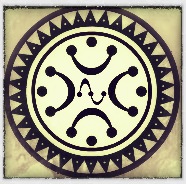

__________________________________
RIDE 2024
The Day of the Dead in Mexico is considered a celebration of memory and a ritual that privileges memory over oblivion.
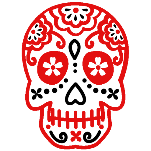
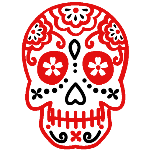
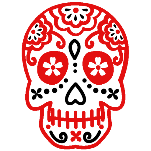
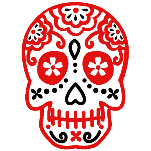
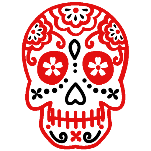
Historic Value
In pre-Hispanic times the cult of death was one of the basic elements of culture, when someone died they were buried and their relatives organized a party in order to guide them on their way to their new life in the underworld.
The Day of the Dead, in the indigenous vision, implies the transitory return of the souls of the deceased, who return home, to the world of the living, to live with their families and to nourish themselves with the essence of the food that is offered to them in the altars placed in his honour.
In this celebration of the Day of the Dead, death does not represent an absence but a living presence; death is a symbol of life that materializes on the altar offered. In this sense, it is a celebration that carries great popular significance since it includes various meanings, from philosophical to material.
This tradition is considered a treasure of Mexican syncretism, since its origin is located in the harmony between the celebration of Catholic religious rituals brought by the Spanish and the commemoration of the day of the dead that the indigenous people carried out since pre-Hispanic times; The ancient indigenous civilizations originating in our country, transferred the veneration of their dead to the Christian calendar, which coincided with the end of the agricultural cycle of corn, the main food crop in the country.
This ancient pre-Hispanic tradition continues to live in Mexican culture, and every year many families place offerings and altars decorated with cempasúchil flowers, ornaments traditionally made of paper, sugar skulls, tipical gastronomy or some other dish that their relatives liked. the offering is dedicated, and as in pre-Hispanic times, incense is placed to aromatize the place.
Likewise, the festivities include decorating the graves with flowers and many times making altars on the tombstones, which in indigenous times had great significance because it was thought that it helped to guide the souls to travel a good path after death.
————————————————————————————————–
Value of Experience
It is worth mentioning that the United Nations Educational, Scientific and Cultural Organization (UNESCO), declared in 2008 the feast of the Day of the Dead, as Intangible Cultural Heritage of Humanity, due to its importance and significance as regards a traditional expression -contemporary and living at the same time-, integrating, representative and community.
For UNESCO, the annual encounter between indigenous peoples and their ancestors fulfils a considerable social function by affirming the role of the individual within society. It also contributes to reinforcing the cultural and social status of the indigenous communities of Mexico.
___________________________________________________

Our Program an opportunity to live a unique tradition.
During our equestrian program “Day of the Dead” Participants will be immersed in one of the most representative Mexican traditions of all time, they will be able to discover this treasure of syncretism, in a unique way, riding on horseback and participating actively, as that will allow them to discover, why this tradition, has conquered the empathy of people in the world, and has been an inspiration for fashion and various international films.
But that is only the beginning, the participants in addition to discovering in situ, the value of this ancestral tradition, will enjoy the warmth and hospitality that distinguishes the Mexican people.
They will be able to taste a variety of dishes of the ancestral gastronomy of Mexico, they will enjoy the best tequilas, they will listen to mariachi music, they will ride through sites of great historical value, heritage cities, magical towns and villas full of legends. In addition to try some of the ancestral drinks of Mexico, and custom themselves as catrinas. The accommodations will be exceptional and adequate for the characteristics of this magnificent travel plan.
This is undoubtedly a “unique” horseback ride, to the very bowels of Mexican culture, which will allow living some of the most important treasures of our culture and traditions, which is why they are inscribed on the Representative List. of the Intangible Cultural Heritage of UNESCO.
_______________________________________________
Itinerary
On this travel plan, during the last three days, we will dedicate ourselves to discover and live from this tradition, in one of the most beautiful cities in Mexico, also recognized for preserving the oldest traditions of our culture. The previous days, our adventure on horseback will begin, following the trail of this ancestral tradition and we will visit on horseback, the mystery villages and their traditions.
______________________
Day 1 / Date; October 26th
This day, the participants will be greeted. At the accommodation in Rancho Las Palmas – Nirvana
Details about location will be given before travel.
_______________________________________
17:00 Official welcome of the participants by the host at Rancho Las Palmas, check in.
-Horse assignment
-Welcome cocktail & -Welcome kit delivery
-Welcome dinner and presentation of the program
| Welcome Kit √ | Welcome coktail √ | Welcome dinner √ |
| Accommodation in shared basis√ |
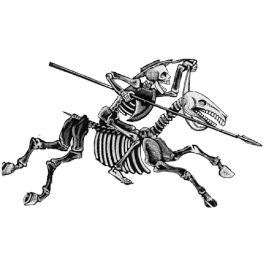 Day 2 / Date: October 27th
Day 2 / Date: October 27th
To start this magnificent trip, what a better way to do it, than in the Sanctuary of Jesus of Nazarene
The Sanctuary of Atotonilco (Spanish: Santuario de Jesús Nazareno de Atotonilco [atotoˈnilko]) is a church complex and part of a World Heritage Site. The complex was built in the 18th century by Father Luis Felipe Neri de Alfaro, who, according to tradition, was called upon by a vision of Jesus with a crown of thorns on his head with blood on his face and carrying a cross.
The main feature of the complex is the rich Mexican Baroque mural work that adorns the main nave and chapels. This was chiefly the work of Antonio Martínez de Pocasangre over a period of thirty years.
The mural work has led the complex to be dubbed the “Sistine Chapel of Mexico.” The complex remains a place of worship and penance to this day, attracting as many as 5,000 visitors every week.
Today we will live a journey on horseback travelling back on time, riding our horses through the historic road to freedom, used for the liberators in the war of independence, back in 1816c.
This old royal road passes through ancient communities where very important historical aspects such as: Indigenous Chichimec, Independence war, And Indian Chapels.
During this day ride, we will have chance to see these historical aspects and we will have lunch in picnic in an historical property that played an important role during the independence war,
back in 1810
Atotonilco Dolores Hidalgo – 29 kilometres
| Breakfast √ | Picnic √ | Dinner √ |
| Accommodation in double basis √ |
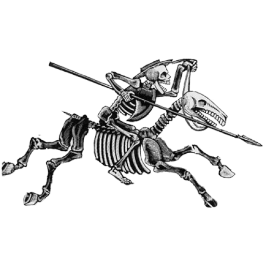 Day 3 / Date; October the 28th
Day 3 / Date; October the 28th
Today, our journey on horseback takes us to discover on horseback Dolores Hidalgo a destination with greater historical and cultural content, visiting the *magical town of “Dolores Hidalgo”, one of the most important historical towns in Mexico, a small but beautiful colonial city that today is “Historical Heritage” because it was the cradle of the most emblematic patriotic feat of our country: The Independence.
Then we will continue riding our horses through the valley of cactus, and small communities in this valley. We will enjoy our lunch in the middle of this exotic valley surrounded by cactus, acacias, and stunning semidesrtic landscape, after lunch we will continue our ride, until we reach place where horses will remain for the night, a place that could easily be any western movie.
We will be transferred back to our hotel in Dolores Hidalgo. So we can discover in detail the peculiar way of living the tradition of the Day of the Dead, in this magical city
Dolores Hidalgo – Los Quiotes 23 kilometres
| Breakfast √ | Picnic √ | Dinner √ |
| Accommodation in a double basis √ |
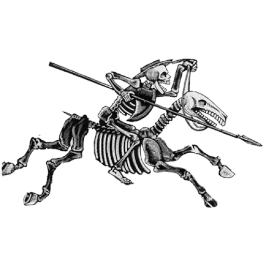 Day 4 / Date; October the 29th
Day 4 / Date; October the 29th
Today, after breakfast we will be transferred by car back to place where horses are ready to continue our journey on horseback. Today’s journey takes us to discover one of the greatest biodiversity areas in the region, through oak forests, pine trees and small communities full of history, nestled in the middle of big and high mountains, and surrounded by majestic natural landscapes. , until we reach our destination Santa Rosa. An small village in the middle of the mountains SIERRA CENTRAL
-We will enjoy the picnic on the way, in the forest surrounded by impressive nature.
Los Quiotes – Santa Rosa 31 kilometres
| Breakfast √ | Picnic √ | Dinner √ |
| Accommodation in a double basis √ |
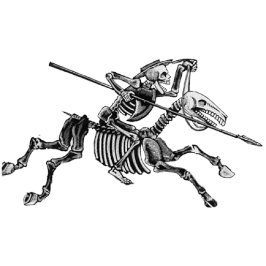 Day 5 / Date; October the 30th
Day 5 / Date; October the 30th
This day we continue our journey on horseback, through the mystery villages,
The magic and splendour of various communities in which the Chichimec culture, mining and a Cristero region converge, were unified in what was called;
“Mystery villages”. For this reason, the thematic concept is based on mystery, which is nourished by the legends and traditions of the region and Mexico, what better time to tour it on horseback, than previous the celebration of the Day of the Dead.
Today’s journey destination is Rancho Colomitos, a small typical Mexican ranch, where we will enjoy dinner and then we will be transferred by car, to our accommodation for tonight
just few kilometers from the ranch.
Santa Rosa – Colomitos 31 kilometres
| Breakfast √ | Picnic √ | Dinner √ |
| Accommodation in double basis √ |
 Day 6 / Date; October the 31st
Day 6 / Date; October the 31st
After our breakfast, at 10:00 am we will be transferred by car, back to Rancho Colomitos, where our horses wait for us, so we can find the proper **”Alebrije” form for them, and to be characterized in the form of catrinas.
THE CATRINA IS CURRENTLY THE SYMBOL OF DEATH AND THE ICON OF THE DAY OF THE DEAD IN MEXICO
We will be able to characterize ourselves and our horses, to later make a short radio tour in the ranch with our horses, and enjoy a photo and video session.
Then we will enjoy at the ranch, a “Catrinas and catrines themed dinner”
And from 5:00 pm -Open Bar for everyone
Lunch & Dinner at the Colomitos Ranch
| Breakfast √ | Lunch √ |
| Catrinas workshop √ | Open Bar & Thematic dinner √ | Accommodation in double basis √ |

**Note: Alebrijes are whimsical carvings depicting animals, people, objects, and imaginary creatures painted with intense colors and intricate patterns. Although these distinctive cultural artifacts are often assumed to represent a long established, tradition of Mexican folk art,
Day 7 / Date; November the 1st.
After Breakfast, we will be transferred by car to the city of Guanajuato
During this day, we will be able to live with intensity the tradition of the day of the dead, in a town full of magic and mysticism, we will take a walking tour, guided through the route of “offerings” allusive to the day of the dead, we will visit the historic center, where we can see and live this unique tradition, later at 13:00 we will take a break, so everyone can walk around and discover by yourself the magic and mysticism of this celebration implicit in the decoration of
every corner of the city.
Meanwhile in this free time, you can enjoy your lunch in one of the many restaurants in the historic center. During this day will be possible to attend the theatrical performances alluding to the Day of the Dead, which are held in the main square, organized by the House of Culture and the Arts.
| Breakfast √ | Lunch/ Not included | Dinner √ |
Day 8/ Date; November the 2nd.
After Breakfast we will visit the “Museum of the Mummies”
Here you will appreciate the mummified remains of our ancestors, some of which date from an antiquity that goes back to 1870. It is considered the current largest collection of natural mummies in the world, a cultural heritage of the Municipality of Guanajuato, which today can be seen in this enclosure 57 items.
Then we will continue discovering the colonial city of Guanajuato, beautiful buildings that contain the elements of the two main cultures that created them, the indigenous and the Hispanic, and that marked the origin of our current culture. the constructions retain their architectural and environmental characteristics. The city was declared by UNESCO as the Historic City of Guanajuato and Adjacent Mines in December 1988. It is currently considered the most beautiful colonial city in Mexico.
We will visit the historic center, we will walk through its narrow alleys, discovering the magic of the celebration of the Day of the Dead, in houses, squares and gardens.
We will visit the “monumental offering” of Guanajuato and “El Tapete de la muerte” (The death carpet) as well as “La Catrina Vive Festival” and we will enjoy live music with local mariachis.
| Desayuno √ | Comida √ | Cena Tacos degustation √ | |
| Open Bar √ | Accommodation in double basis √ | ||
Day 9/ Date; November the 3rd.
Breakfast will be at the hotel and at 11:30 am ,* End of our services
| Breakfast √ | XX | XX |
| Includes: |
|
| Not included: |
|
IMPORTANT NOTE: It is important to clarify that the itinerary described here is an example, and may have changes in its content at the time of execution, always in order to allow participants to live the best possible version of this wonderful experience. Everyone participating in this journey understands and accepts this
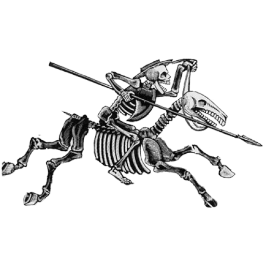
“TO HONOR DEATH,IS TO GIVE MEANING TO YOUR OWN LIFE”